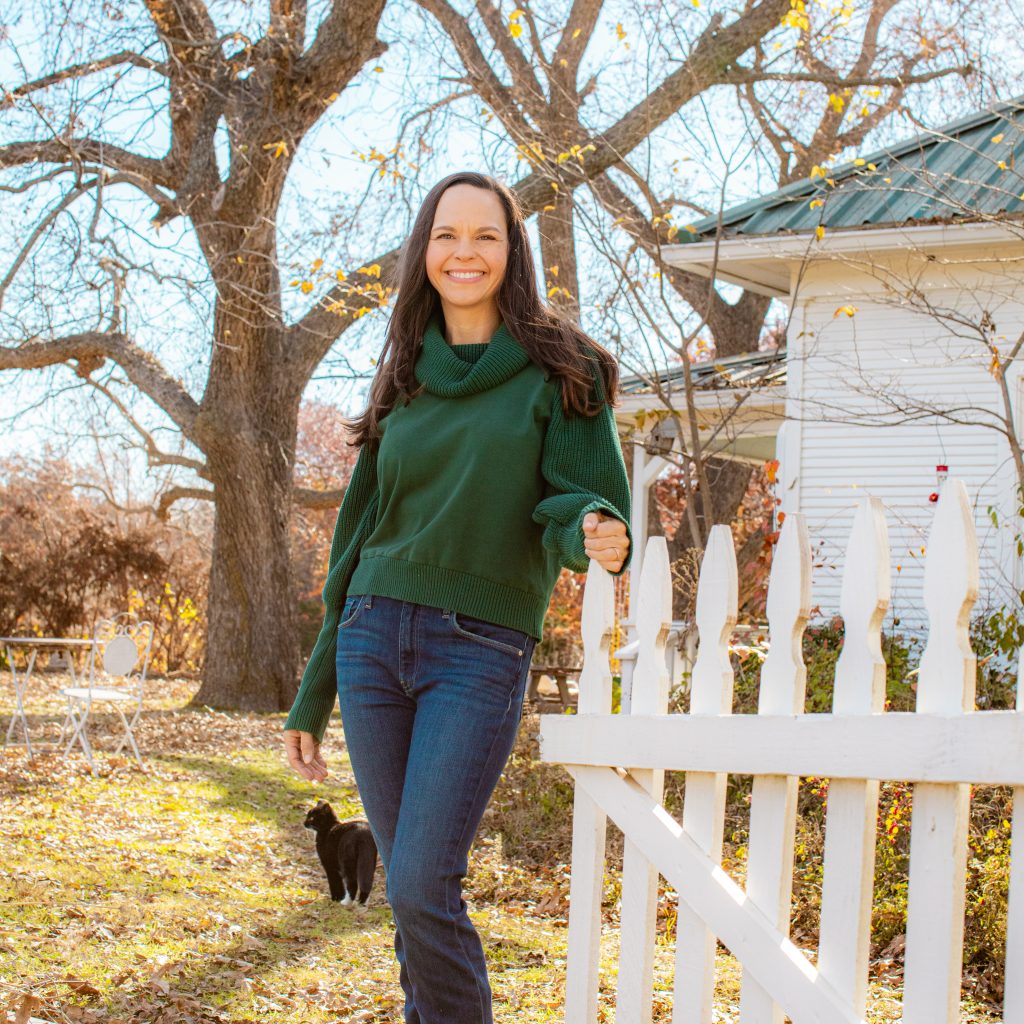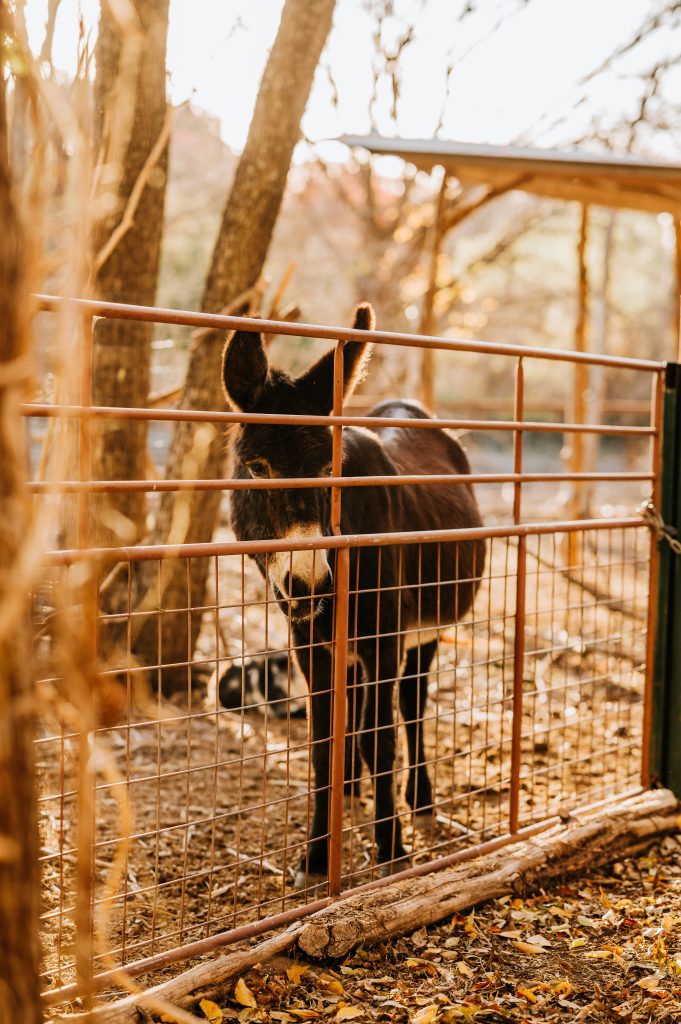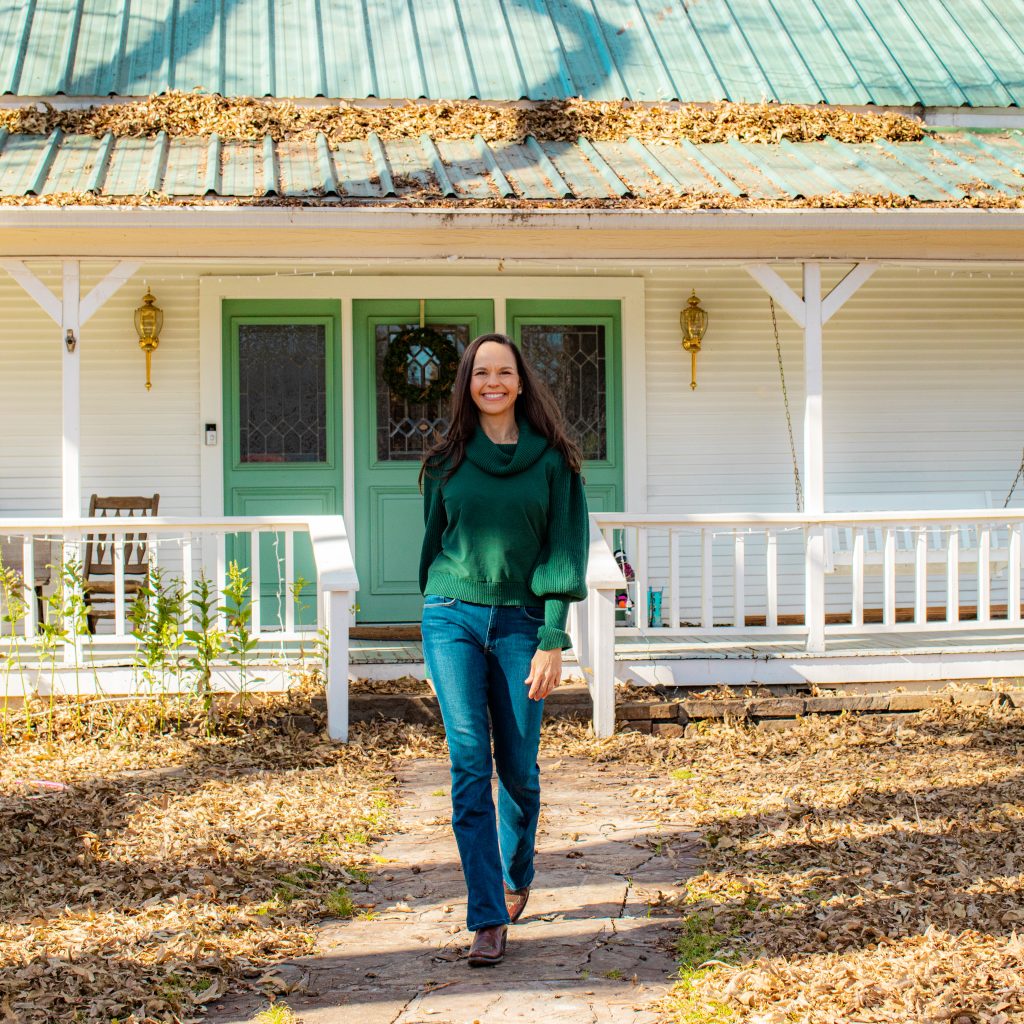Connection, Safety, Learning: The Magic of Springbox Farms
Between stimulus and response there is a space. In that space is our power to choose our response. In our response lies our growth and our freedom.
Viktor E. Frankl

Being the parent of a neurodivergent child is so very difficult. There is still so much to learn about how the brain develops and processes, and a diagnosis of autism spectrum disorder (ASD) or attention deficit/hyperactivity disorder (ADHD) affects the whole family. And once there is a diagnosis, the situation doesn’t get easier. Because each brain is different, there is no standard course of care that works for every child. Unfortunately, neurodivergences are still seen as pathologies, as things to be fixed, which can lead to treatments that can be clinical and trauma-inducing for the child and the parents.
What if I told you it doesn’t have to be that way?
Follow me down I-20 toward Weatherford. Pass the strip malls and the gas stations. Pass the fast-food restaurants and the thundering semis to turn down a quiet country road. Feel the city slip away as you turn into an unmarked driveway and pass a hundred-year-old farmhouse shaded by two ancient pecan trees. Welcome to Springbox Farms. This is a place where neurodivergent children and their families can come together to take a deep breath, connect, and feel safe.

photo credit: Emily King
I first heard about Springbox Farms from a college friend. Katy Wampach is a teacher in Fort Worth ISD whose son, Will, is one of Springbox Farm’s successes. Katy said, “Looking back on it now, there is so much evidence that our son was wired differently. Not bad, but different.” Through a local group of moms who are parents of children with autism, Katy found Springbox Farms and Charlotte Sammons.
Charlotte Sammons is the genius behind Springbox Farms. “Genius” is a term that is overused so much that it has lost its meaning, but believe me when I tell you that Charlotte is a genius. She has worked with children her whole life. That’s not an overstatement. She got a job in a nursery when she was 11. She homeschools her kids. She loves children.
She also loves neuroscience. She got her master’s degree in educational psychology from the University of Texas. She’s worked with neurodivergent children in all sorts of environments, from schools to clinics to homes. She’s got the academic and professional chops.
On a beautiful fall day, Charlotte and I sat on the porch of the barn at Springbox Farms, overlooking a meadow surrounded by trees at the peak of their autumnal glory, to talk about her journey and what she hopes is the future of this exceptional place.

photo credit: Brad Frace
“I came out of my master’s program and saw a huge gap in services,” Charlotte said. “There’s a need for what we do, which is really a heart-centered, whole person-focused model of care.”
[Editor’s note: Before we go further, we need to do a quick dive into ABA therapy. ABA, or applied behavioral analysis, is also known as behavioral engineering. ABA therapy assesses the functional relationship between a behavior and the environment and then seeks to change it to something that is, shall we say, more socially acceptable. It became the gold standard treatment for children with autism to the extent that most ABA therapists work almost exclusively with children with autism, even though autism training is not required for ABA certification. In addition, ABA therapy is the only therapy for children with autism that is covered by insurance. It is quite controversial for a variety of reasons that we don’t have the space to cover here.]
A recovering perfectionist, Charlotte remembers the first time she got a not-quite-raving review. “My advisor said, after observing one of my sessions, ‘You know, you spent way too much time playing with that kid. You spent way too much time connecting with him.’” A look of mingled amusement and frustration crossed her face as she continued, “I said, ‘Look at my data. He masters programs with me faster than with any other therapist, so I don’t have to do as many repetitions.’”
While working on her master’s, Charlotte took a break to work as an ABA therapist for six months for one of her professors. “I was excited to work in the field,” she said, “But I realized pretty quickly that there was a misalignment between what I was being taught to do and told to do, what I was learning about motivation and emotion, and what I know from being a trauma survivor.
“Trauma and being neurodivergent so often go hand in hand because these people live in a world that isn’t supportive of their needs.”

photo credit: Emily King
As Charlotte began working after graduate school, she started to move past the rigid, clinical approach to autism therapy and to develop her own method. That’s not to say she doesn’t use her education. Remember, she’s a neuroscience nerd. That heart-centered, whole-person-focused model of care she talked about is firmly grounded in the latest neuroscientific research.
There are three steps to the work Charlotte does on the farm. She establishes a place of safety and connection for the child, she helps the child connect their bodies to their emotions and their emotions to their behaviors, and she teaches them to advocate for their needs. Simple, right?
“Just establishing a sense of safety and connection can take years for some kiddos,” Charlotte said. “And that’s okay. If that’s their timeline, that’s okay. But you can’t tune into yourself if you don’t feel safe.”
Once the child feels safe, they work on learning to tune into themself and feel what is going on in their body. The fancy neuroscientific term for this is “interoception.” Charlotte helps to guide the child into recognizing the signals their bodies send their brains and the feelings they have, which leads to the emotions they have and the behaviors the emotions cause.
The third step is helping the child to advocate for themself. “Can you advocate for yourself? That’s what the aim is here. And they can, and it’s beautiful. When I get a call telling me that a kindergartener asked his teacher for a break, I know what we’re doing is working.”
Children are bombarded with demands for compliance. From overworked teachers who have to juggle the demands of 25 or 30 students while trying to teach to parents who are exhausted from work and parenting, children are told they need to comply with the demands of others. There is very little room for real connections, real relationships in our modern lives. “Relationships are so regulating; we need that connection,” Charlotte said.

photo credit: Emily King
Instead of collecting data and going through a checklist of behaviors to be managed, Charlotte simply asks her kiddos, “What do you need?” Instead of working in a clinic or an office or even her clients’ homes, Charlotte works on 16 beautiful acres with two creeks running through them. Two nature trails cross the property. Her co-workers are donkeys and goats and rabbits and chickens and cats. There is a mud kitchen and an outdoor art studio for play therapy and art therapy. “You can see the kiddos relax out here. Their body language changes from being so tight and tense as they start to take deep breaths and release.”
Katy Wampach agrees. “[Will] was happiest when he was outside. He could spend hours digging in the ground, searching for (and catching) lizards. He collected leaves, rocks, branches, etc. When left to his own devices, he could always find ways to entertain himself. That all changed when preschool started… I’ll never forget the day a preschool director told me, ‘We can’t make him have a good day.’”
Through her training as a teacher, Katy soon realized that Will was not feeling safe. “Situations that were easy for other children, effortless for me, were hard for him because the world around him felt so very different… We needed to help him find that sense of safety and security in order to access the highest levels of his brain… I’ll never forget that first phone call with Charlotte. As I laid out what was going on, the behaviors the school was seeing, the challenges my son was having, her first reaction was not to immediately try to figure out how to stop them. Her first reaction was, ‘Wow, it sounds like he must be so scared.’ It was the absolute opposite of, ‘We can’t make him have a good day.’ I talked with her for over an hour… Then I sat in the Target parking lot and cried tears of relief.”

photo credit: Emily King
But simply working with the child isn’t enough. That child doesn’t exist in a vacuum. They’re part of a family, and the family needs care and support if they are to help support that neurodivergent child. And this is why Charlotte sees herself as a cycle breaker.
“Parents come to us for their children, but they need the same care and support as their kiddo,” Charlotte said. “The family has its own nervous system, and we need to realize that. Parents need to feel safe, too.”
Let’s face it: most of us were not taught to tune into ourselves and connect our bodies and emotions and behaviors. We were taught to smile and pretend all is fine because that’s what our parents were taught and what their parents are taught.
“One day, my grandmother, who has dementia, was visiting, and we were sitting on the porch swinging. She had just moved into a new memory care facility, and I said, ‘I did not like that other place you were.’ She said, ‘Neither did I!’ I said, ‘That’s not what you told us. You said everything was wonderful and that you loved it.’ She looked out, and with so much clarity and lucidity, she said, ‘Well, that’s what we do.’ That’s why I’m teaching people to be cycle-breakers.”
Charlotte smiled, “I will never forget when I started on my healing journey as a trauma survivor, I was told, ‘Don’t let anyone tell you that this work is selfish because you are healing yourself, but you’re also healing seven generations before you and seven generations after you.’”
One of Charlotte’s dreams is to establish a nonprofit specifically to pay for parental support. “If we can put the focus on us for just a little while and realize that no one taught us to take deep breaths. No one taught us that emotions are safe. The things that were shut down in us when we were little are what most trigger us in our children. Our nervous system panics, so we try to shut down like we were shut down. None of this comes from a place of ‘I don’t want my kids to feel;’ it comes from an unconscious place of ‘I am triggered, and I am panicking, and I need to establish safety.’ We need to break that cycle.”
As parents, we need to advocate for ourselves as much as we advocate for our children. If we are feeling overwhelmed, and let’s face it, parenting is pretty overwhelming, it’s okay to take a step back, take a breath, and regulate our bodies. Charlotte even has a code word that her family knows. “I say ‘cozy blanket.’ That means, ‘I need some space, so I’m going to walk away, but I will be back.’”
[Editor’s note: I’m so using that from now on!]

photo credit: Brad Frace
As Charlotte and I wandered around the farm, I realized how much most of our lives are disconnected from nature. We live through screens. We go from an air-conditioned house to an air-conditioned car to an air-conditioned office to air-conditioned malls and supermarkets. Our senses are under constant bombardment. At the farm, it’s not quiet because nature isn’t quiet, but there is peace.
The name of the farm comes from the spring box that sits alongside the creek that runs by the farmhouse. A spring box is, according to Wikipedia, “a structure engineered to allow groundwater to be obtained from a natural spring… [and] functions to protect the spring water from contamination… and provides a point for collection.” Charlotte said that in the past, this particular spring box was used as a swimming hole and even as a place for baptisms. In this place of safety and love, a sense of the holy lingers.
“I see my son, so much more comfortable and confident in his own skin,” Katy said. “And I see a lens shift in myself… I see a lesser desire to control and a greater desire to connect. And I know with connection comes safety, and with safety comes learning, and with learning comes change…
“In Charlotte, we have found such acceptance and love, an example of how to interact with others. Isn’t that what our world needs?”



 Sign in
Sign in


What a wonderful story! Way to fill the gap, Charlotte!
Having known Charlotte for many years, I am beaming with joy to read this lovely article and see her heart’s vision now reaching more families! She is truly a gifted cycle-breaker and healer.